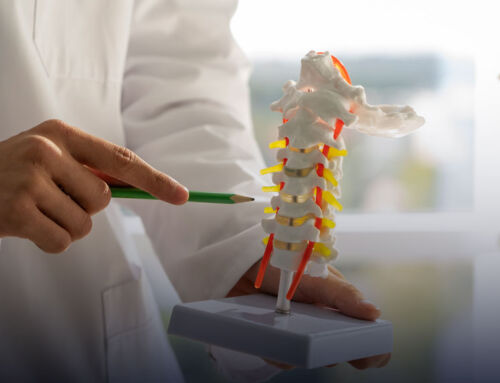The opioid crisis has been declared a national emergency by the United States government, which has helped bring the subject of chronic pain management into sharp focus. Treatment for long-term chronic pain relief has relied heavily upon the use of opioid pain killers, but troubling trends in the long term effects of opioid addiction have sent physicians, medical device designers, and drug manufacturers searching for alternative treatments.
Opioids are ineffective at treating long-term chronic pain because patients often develop a tolerance, which in turn requires higher dosages, leading down a potentially dangerous or deadly path. According to the Centers for Disease Control and Prevention, emergency room visits for suspected opioid overdoses increased by 30 percent between July 2016 and September 2017.
For these reasons (among many) our practice at SpineOne does not include prescribing or managing long-term pain relief using narcotics or opioids. Our treatments traditionally focus on helping with rapid and effective pain relief that can let you resume healthy mobility and promote long-term spine health. For patients experiencing debilitating nerve pain, we offer an exciting alternative to high doses of opioids.
Success Rate of Spinal Cord Stimulation
 “There’s no doubt that we’re helping our patients reduce their risk of opioid dependence with these treatments, and especially using HF10 therapy,” said Dr. Hashim Khan, SpineOne physician specializing in Spinal Cord Stimulation.
“There’s no doubt that we’re helping our patients reduce their risk of opioid dependence with these treatments, and especially using HF10 therapy,” said Dr. Hashim Khan, SpineOne physician specializing in Spinal Cord Stimulation.
“These impulses can dampen chronic pain signals, which can be a defining moment in our patient’s lives and address the opioid crisis: we can reduce or eliminate opioid dependency and help them get their lives back.”
Spinal Cord Stimulation is a rapidly changing field of medicine. New devices and options become available frequently. Newer devices, such as Nevro HF10 Therapy offered at SpineOne, provide freedom from the tingling or buzzing sensation (known as paresthesia) prevalent in traditional SCS therapies. These devices offer viable, drug-free pain relief for chronic back and leg pain. In two long-term studies, HF10 therapy has demonstrated over 60% relief of chronic back pain at two years while achieving reductions in opioid usage.
Follow-ups with our patients who have had HF10 spinal cord stimulators implanted have shown a remarkable reduction in pain scores and improvement to their quality of life. Some patients report that they have gone from discomfort that they had ranked as a 7 or 8 (on a scale of 10) to a much more manageable 3 out of 10. Others have reported that their pain has disappeared completely with use of the stimulator.
Spinal cord stimulation is an effective alternative to chronic pain management that can help reduce the opioid crisis in America. If you would like to learn whether a spinal cord stimulator is the right answer for your chronic back pain relief, schedule an appointment with our spine specialists today.



